Silkie Chicken: Ultimate Guide (Raise & Care for this Breed)
Published: March 13, 2023
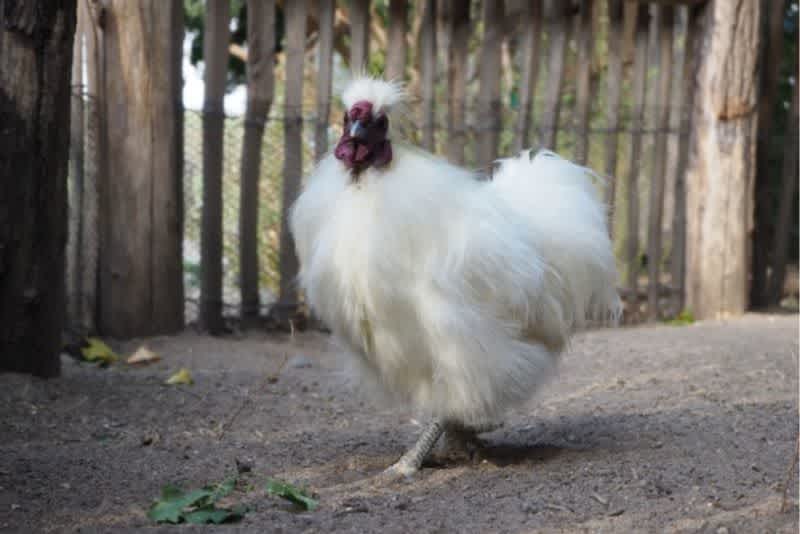
Silkie chickens are delightfully distinctive avian creatures. Bred to stand out both in beauty and utility, these birds bring added joy and purpose to any farm
They are a beautiful breed of chicken in many colors, including black, white, blue, and Buff. They are also known for their soft feathers and calm temperament.
In this article, we will discuss everything you need to know about Silkie chickens, from their characteristics to how to care for them so that your Silkies will live a long and happy life.
What is a Silkie chicken?
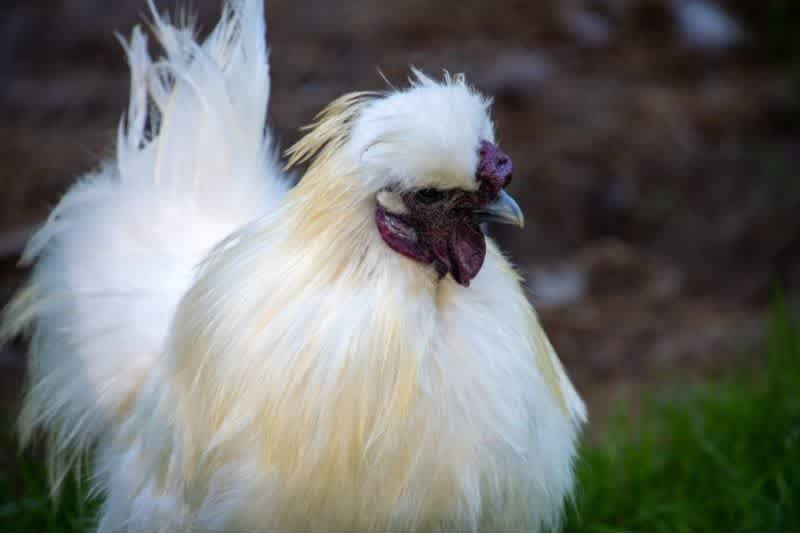
Silkie chickens are a breed of chicken with an incredibly unique and attractive appearance, making them incredibly popular and much loved. Silkies are known for their fluffy, soft plumage that has a texture, unlike most other breeds of chicken.
Silkies also have black or bluish skin underneath their soft fluffy feathers, which gives the birds an exotic look.
Silkie chickens lay small eggs and have walnut-shaped combs. Some Silkie chickens are bearded, while others are not. They also have feathered feet.
All of these characteristics make Silkie chickens stand out from ordinary chickens.
Silkies are popular as pets due to their docile nature and gentle disposition (they're even great with children!)
Silkie chickens are also gaining attention among poultry farmers because they can survive in colder climates than most other breeds (as long as they have shelter, they can survive in temperatures as low as 0 degrees Fahrenheit).
Despite being one of the oldest known poultry breeds, Silkies remain popular today due to their docile nature, plentiful meat production, and relatively easy upkeep compared to other poultry breeds.
History of the Silkie chicken

Silkie chickens are an ancient breed of chicken with origins tracing back centuries in Asia (most notably China, however, there are discussions about what part of Asia). Among Western literature, Silkie chickens were first mentioned by Marco Polo in the 13th century when he referred to Silkies as "furry" chickens during his travels in Asia.
Silkies arrived in Europe circa 100 BC, when they helped stock modern poultry farms with their distinctive soft feathers. Their breeding then increased under the Roman Empire.
Silkie chickens have been providing eggs and meat for the affluent for centuries and have been used for medicinal purposes throughout history.
They made their way to the West via the Silk Route, an ancient trade route. They were officially recognized as a poultry breed and submitted to the Standard of Perfection in 1874.
With such a long and interesting history of Silkie chickens, it's no wonder why people are still drawn to them today!
Personality
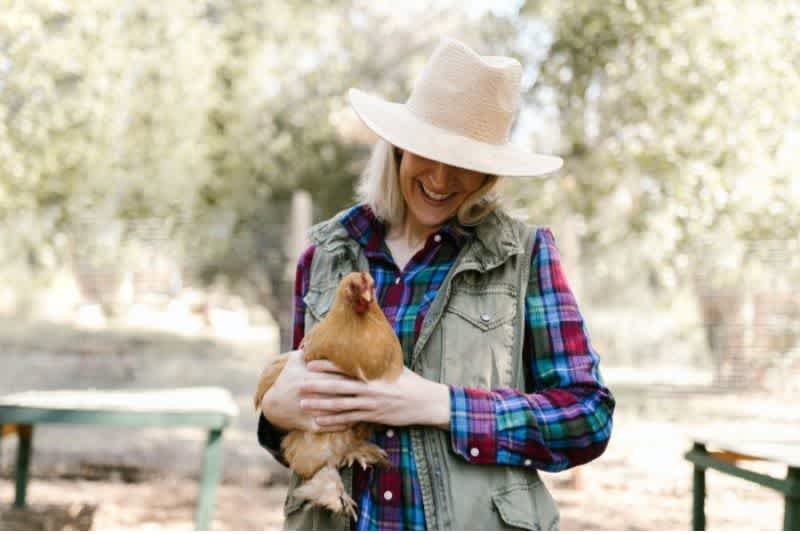
Silkie chickens are known for their docile personalities, making them a favorite choice for those seeking an easy-going, friendly pet to keep in their yard. Silkies tend to form tight bonds with the people around them and can typically be seen following their humans around the garden! They are often introduced as a calming presence.
Due to their gentle nature, Silkie chickens often act as 'nannies' for younger chicks as they protect them from predators and maintain order amongst the group. Furthermore, Silkies have excellent parenting skills; both mother hens and father roosters will diligently look after their chicks throughout the day.
However, it's worth noting that other chicken breeds may be extremely aggressive towards your Silkies since they have such a unique outer appearance. Be sure to prevent this from happening!
Physicality
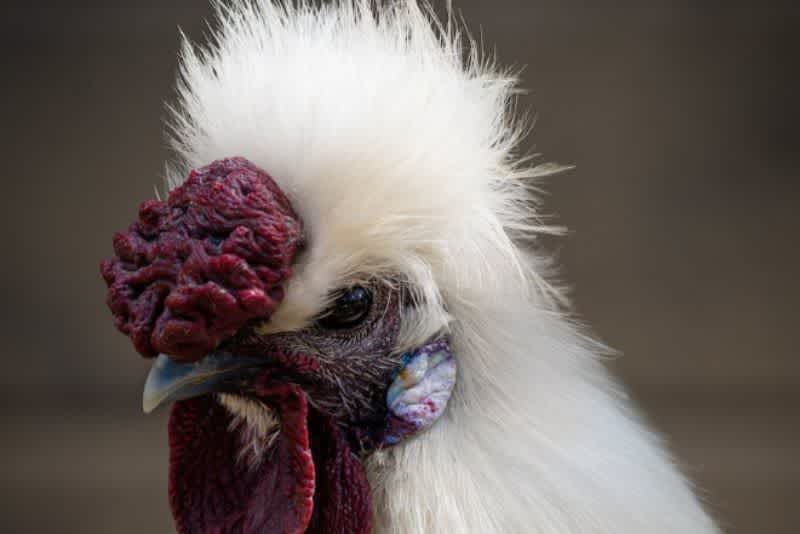
Silkie chickens are relatively small in size in comparison to other chicken breeds. They have compact bodies and a fluffy appearance.
Silkie chickens also have distinctive ear tufts, which add to their overall fluffed-up look. They also have very interestingly shaped walnut combs.
But that's not all. Silkie chickens also have five toes rather than the typical four found on most chickens!
A Silkie rooster weighs about 4 pounds, while a Silkie hen weighs roughly 3 pounds, standing about 8-14 inches tall. This makes them an ideal size for a suburban backyard chicken coop or family garden.
These chickens can be divided into the bearded Silkie and the non-bearded Silkie. The bearded Silkie has a beard and muffs of feathers around its face, while the non-bearded Silkie does not.
All Silkie chickens come in various colors: black, blue, white, buff, partridge, and gray, among others!
Purpose

As mentioned, Silkies are known for being incredibly gentle and affectionate birds, making them the ideal pet for families. Silkies are also the perfect chicken for small backyard flocks due to their small size (they only grow up to just past one foot tall).
Bantam Silkies are great to have around, as they are generally free-range in the yard while providing eggs, bug control (they typically enjoy eating bugs), and entertainment.
While Silkie chickens do provide eggs, that is not their main purpose. Silkie chicken eggs are small (only 1.5 oz.) and usually only lay around 2-4 eggs a week. These eggs are often cream or white.
Silkie chickens are also fantastic parents known to keep their chicks safe and warm. They also make for popular exhibition birds due to their unique looks and calm personalities.
Overall, Silkies are a great addition to any flock! They may not lay as many eggs as other chickens, but they make up for it with their sweet disposition and distinct physical appearance. With the right care, Silkies will make a fantastic addition to your farm.
Care
Silkie chickens are not the most high-maintenance chicken breed, but they still require care and attention to thrive.
Regarding Silkies, some of the most important things to consider are proper nutrition, housing, and health check-ups.
Diet

It's important to properly maintain Silkies by ensuring they are well-fed. Silkie chickens eat about a quarter pound of food (2-4 ounces) each day and need a variety of feed that contains many essential vitamins and minerals.
Silkie chickens benefit from an omnivorous diet composed of various types of feeds and prey like insects, seeds, fruits, and vegetables. Chickens typically enjoy eating whole grains (oats, wheat, barley, maize, etc.), and Silkie chickens are no different!
Silkies also like plenty of protein-rich grains, such as soybean meal which is the best source of protein, along with a balance of grit and freshly cooked vegetables.
It's also important for Silkies to have access to clean water daily, so providing deeper bowls or enhancing natural sources such as ponds and streams may be beneficial.
As you can see, Silkies require plenty of variety in their diets to stay fit, healthy, and vibrant.
Health

Silkies have the same immune system as any other chicken and have a long life expectancy of up to 9 years. However, they are highly susceptible to Marek's Disease, which can result in death.
Vaccinating day-old baby chicks is the best way to prevent this disease from affecting your chickens. Once they are past a day old, Silkies should also have their health checked periodically by a veterinarian specialized in poultry for any signs of illness, parasites, or injury.
Besides the high risk of developing Marek's Disease, Silkie chickens have a great immune system as they have been bred over centuries!
Silkie chickens are also generally easier to tend to than most poultry due to their good health and docile nature, requiring less daily care overall. They're also much easier to contain as Silkie chickens cannot fly due to their soft and fluffy plumage.
Parasites
Silkies are more susceptible to mites and lice due to their long and fluffy feathers. To make the problem worse, it can be harder to identify if your Silkie has mites or lice due to its black skin!
This is why it's important to have a dust bath readily available for your chickens so they can adequately clean their feathers. This allows your chickens to remove excess oil and creates a less desirable home for parasites.
If you want to make a dust bath for your chickens, it's fairly straightforward. It's a hole with fine dirt and sand. You can also use potting soil if you have that available.
Another way to prevent parasites from making their home on your chickens is by keeping their coop clean and sanitary. It's recommended that you clean a chicken's coop once a week. This can include removing any dirty bedding, replacing it with clean shavings, and wiping down the nest boxes and floor with a bird-safe disinfectant.
Make it a habit to check your Silkies regularly (it can be twice a month) for mites and lice. If you notice that your Silkie has parasites, there are different ways to treat it, like powders or drops. Speak to your vet about properly treating your chickens if they deal with parasites.
All in all, Silkies make an excellent choice for those looking for healthy and low-maintenance poultry.
Housing

When it comes to housing Silkies, the best option is a warm, sheltered enclosure that is large enough to give them plenty of room to roam but small enough to keep them safe from predators.
The coop should have a sturdy roof and walls and be well-ventilated but not drafty. You don't want any respiratory issues!
All Silkies should have at least 4 square feet of space in the coop and 8 to 10 square feet for larger Silkies or outdoor pens and 1 square foot per bird in the run.
Bedding
The best floor bedding for Silkies is wood shavings, shredded newspaper, or wood chips. Check how dirty their bedding is once a week and consider cleaning and replacing it when needed.
Silkie chickens enjoy a safe place to roost, away from potential predators. You can place perches that are low to the ground or sturdy branches up to five inches in diameter to encourage roosting.
Remember that Silkies cannot fly, so you want to ensure their roosting areas are high up and inaccessible. Silkies can jump between 8 to 16 inches high, so keep that in mind when building your roosts.
Here are more specific instructions on how you can build a roost. Not only will your Silkies love this, but it will add a rustic element to the coop!
Nesting boxes

Silkies need nesting boxes to lay eggs in. These nesting boxes should measure at least 12 by 12 inches. Nesting boxes are usually wood and lined with fresh straw as a cushion. Make sure that they are easily accessible!
It's important to check the nesting boxes regularly and collect any eggs Silkies may have laid. This way, you can ensure that Silkies don’t eat the eggs or become egg-bound.
Silkies lay about 120 1.5-ounce eggs per year, about 2-4 eggs per week.
Finally, a Silkie home is only complete with a dust bath! This helps them keep their soft fluffy feathers healthy and clean!
Overall, Silkies thrive in an environment that provides both spaces to explore and protection from harm. The right mix can provide your Silkie with the perfect home!
Land

Silkie chickens thrive best on fenced-off land, keeping them safe from predators and providing a stable environment for their foraging. Since Silkies are smaller, they will only need as much room as other larger chicken breeds.
When roaming around outside, ensure easy access to fresh water nearby to help them stay well hydrated, especially during summer. Ensure they have access to shade and dry areas if they get wet.
The land should have plenty of soft vegetation like grass and vegetation to peck through. Silkies love to peck and scratch the ground in search of tasty insects!
An ideal Silkie chicken environment would be outdoors with a secure fence keeping them safe while allowing them enough room to roam freely, enjoying all the wonderful things nature has to offer.
Climate
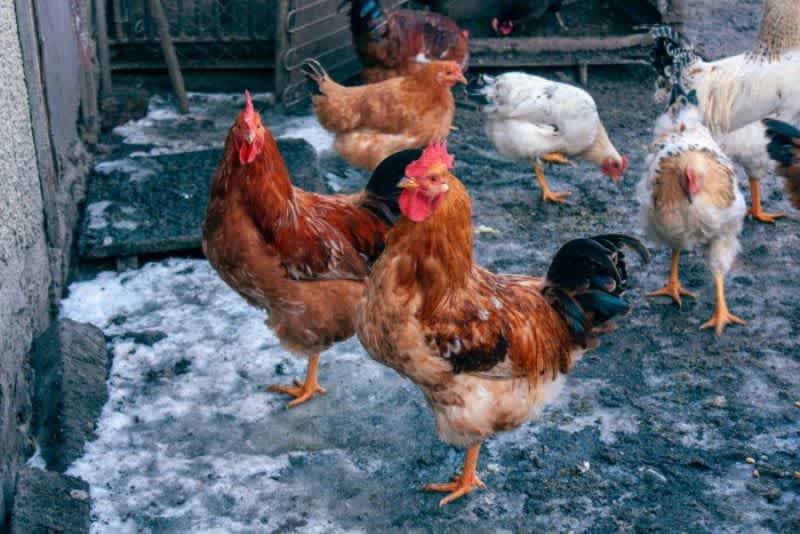
Do Silkie chickens thrive in hot or cold weather? Do Silkie chickens prefer dry or wet climates?
Cold and hot
Silkie chickens can survive in freezing temperatures. They also do well in temperatures as high as 75 to 80 degrees Fahrenheit but keep an eye on them if they begin to pant or spread their wings to try to cool themselves off. At that point, it's time to cool off your chickens.
There are plenty of ways to cool off your chickens, like providing more shade, cold fresh water, and more.
Wet and dry
In addition, Silkies do not do well in wet climates. This is because their feathers are not waterproof. Since their feathers are so fluffy, they are vulnerable to absorbing water quickly when exposed to wet elements for an extended period of time.
If a Silkie is in a damp environment for too long, this can lead to various health issues, such as hypothermia which can lead to death.
Taking these factors into consideration, Silkies should be raised in drier climates.
Pros and cons of owning a Silkie
Here are some reasons you may or may not want to invest in a Silkie chicken.
Pros
Unique appearance makes them great candidates as exhibition birds
Docile personalities with low temperament (they're great with kids)
They are unable to fly, so you don't have to worry about them flying over fences
The Silkie chicken can handle cold and reasonably hot temperatures well
They love insects, so they can be used for bug control
Cons
Poor egg layers in comparison to other chickens (they only lay between 2-4 eggs each week in comparison to six on average from other chicken breeds, and Silkie eggs are small in size, weighing only 1.5 ounces)
Higher chance of getting Marek's Disease
Their fluffy feathers mean they are more prone to parasites
Since they are so docile, other chicken breeds may take advantage of them and be aggressive
They do not do well in wet environments
Is the Silkie chicken right for you?
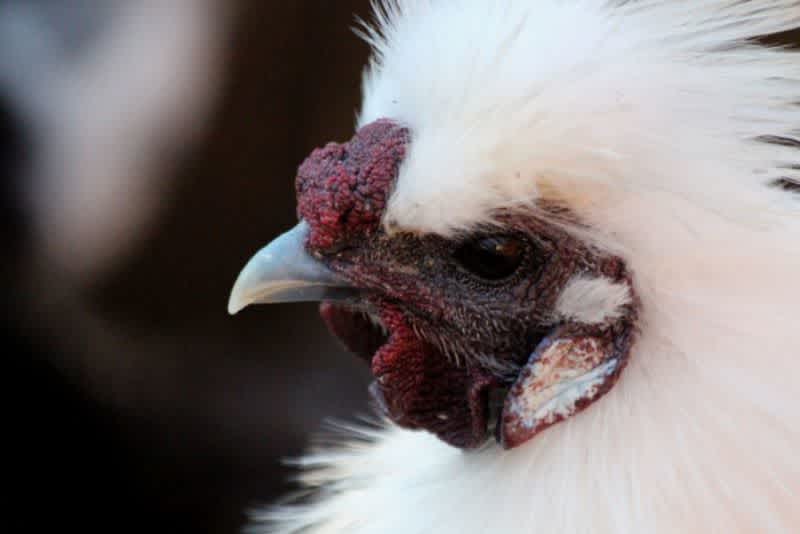
Taking everything we've learned about Silkie chickens, here are the determining factors as to whether or not Silkie chickens are right for you.
You should get a Silkie chicken if:
You're just starting with owning chickens
You are looking for a unique and exotic-looking show bird that is perfect for poultry shows
You don't have a whole lot of space since Silkies are small and don't require much
You want a calm pet that is friendly with kids
You want a hardy animal that is good in hot and cold climates
You want an animal that will take really good care of their baby chicks
You have a bug problem and want an animal that will help with bug control
You should not get a Silkie chicken if...
You want a chicken that lays a high number of large eggs to eat or sell
You're looking for a more aggressive animal that will defend itself, especially against predators
You don't want to deal with animals that are more prone to diseases and parasites
If you live in an environment where it is primarily damp and rainy as Silkie chickens do not thrive under these conditions
Where to buy Silkie chickens

The Silkie chicken has become increasingly popular in recent years because of their unique, fluffy feathers and friendly disposition.
If you’re interested in raising Silkie chickens as pets or farming, you will find a wide range of Silkies available on many websites. Silkies are available from hatcheries and local farms specializing in Silkie chickens. You can also browse websites like eBay, where Silkies can often be found for sale.
All in all, there's no shortage of options for buying Silkie chickens!
Cost
Silkies typically start at $20 and go up from there. Silkie-hatching eggs are roughly the same in price but can be more expensive.
FAQ
What color eggs do Silkies lay?
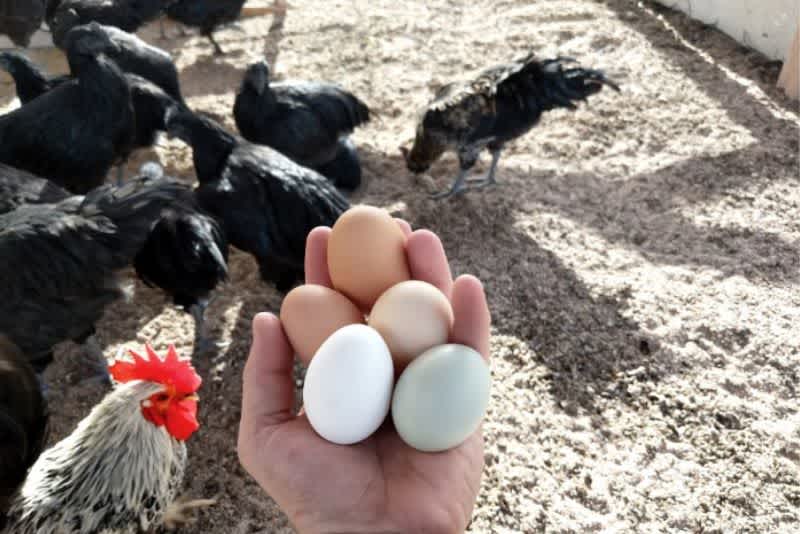
Silkie chickens lay eggs that range from white to cream in color. Silkie hens lay small eggs compared to other chicken breeds, and they are not good egg layers.
Despite this shortcoming, Silkies are beautiful birds with calm temperaments, making them a real delight in your chicken coop!
What does Silkie chicken taste like?
Those who have tried Silkie meat say it tastes like a regular chicken with a slight hint of duck. Silkie chicken is often eaten braised but may also be used to make stock, fried, or roasted.
Silkie chicken meat is most commonly eaten in Asian cuisine, and Silkie soup is a delicacy in China. However, you won't find it in places like Europe or America. Silkie meat is considered unappetizing and off-putting in those regions due to its black flesh.
Silkie chicken meat has also become popular in other parts of the world (particularly Asia) due to its unique flavor. These countries include Japan, Cambodia, Vietnam, and Korea. Silkies are tender, lean, and rich in vitamins and minerals.
Silkie chicken is one special type of poultry, and its flavor stands out when cooked properly. If you're looking for something different, Silkie chicken is a perfect choice!
Do Silkie chickens lay eggs to eat?

Yes, Silkie chicken eggs are good to eat.
Due to the body size of the Silkie, the eggs are much smaller than regular chicken eggs. However, Silkie Chicken eggs still make for an enjoyable eat and can be boiled for salads or added to other dishes as an additional ingredient.
Silkie Chickens are usually kept as house pets or ornamental birds rather than being bred frequently for food products such as eggs.
Are Silkies noisy?
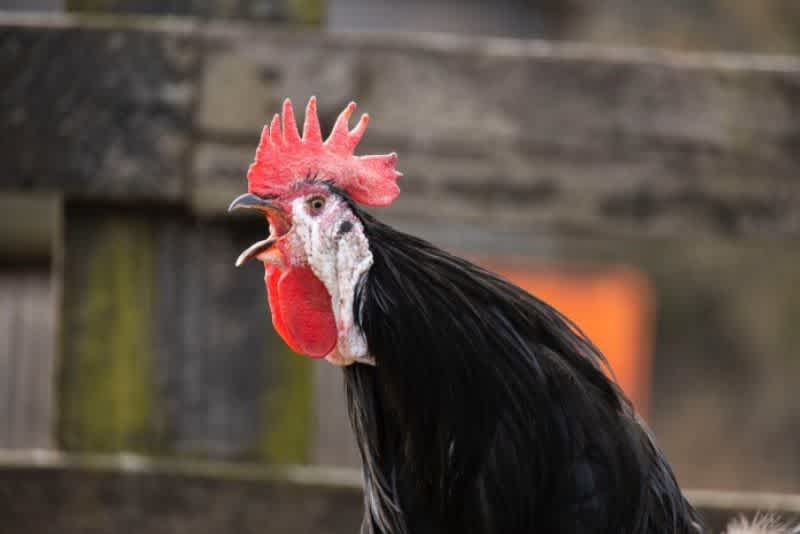
No, Silkies are not known for being noisy. They are among the quieter breeds of chicken due to their calm and quiet demeanors.
They will usually just make gentle clucking sounds and be generally quite calm and pleasant to listen to. Most Silkies seem content with making the occasional sound rather than crowing excessively, like some breeds of chicken tend to do.
Are all Silkies bantams?
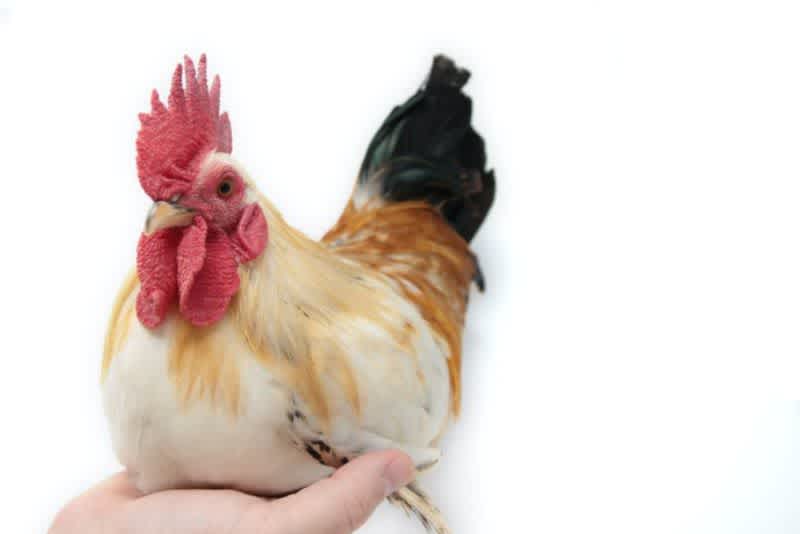
No, all Silkies are not bantams.
A Silkie bantam is a Silkie chicken bred to be smaller than a regular Silkie. Silkies are naturally small, and the bantam variety is even tinier, only weighing a few pounds. Silkie bantams are popular pets and show birds due to their petite size.
Regular Silkie chickens weigh up to 4 pounds and are not considered bantam Silkies. A bantam Silkie typically weighs between 1 to 2.5 pounds and reaches a maximum height of about sixteen inches.
Do Silkie chickens smell bad?
No, Silkies do not naturally smell bad. Silkies have the typical distinct chicken smell like other chicken breeds.
As with any chicken, the level to which it smells like a chicken or smells "bad" depends on how clean its living quarters are. Consider cleaning out coops once a week, depending on how quickly living areas get dirty. Also, ensure you provide adequate dust baths, as Silkies tend to become oily and smelly if not given enough time in the dirt.
Silkie chickens are generally not known for smelling bad and are usually considered odorless. Silkies make wonderful pet chickens and are a generally well-behaved breed that is easy to take care of and maintain.
Conclusion
Raising Silkies is a rewarding experience; there is plenty to learn about this unique chicken breed. Silkies may not be the best egg-layers, but their friendly personalities and unique physical appearance make them worth considering.
Silkies get along great with other animals and humans, and they are relatively hardy birds that require minimal upkeep.
We hope this article has given you a better understanding of Silkie chickens and that you can now decide whether Silkies are the right breed for your coop!
Good luck and happy Silkie raising!
Keep track of all your cattle with the #1 Cattle Management Software
Try out Ranchr today for free